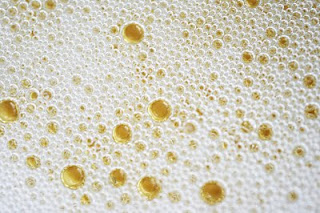- Cristalino Extra Dry Cava NV
- Domaine Laurier Los Carneros Pinot Noir 2007
- Borsao Campo de Borja Garnacha 2009
- Castano Yecla Monastrell 2009
A consistent value producer, Bodegas Borsao in the Zaragoza region, north of Barcelona, specializes in local Grenache, or Garancha. With its dark cherry color and rich aromas of berries, plums and coffee, its bright character is accented by a kiss of spice. Located in the autonomous state of Aragon, this world class wine growing region along the banks of the Ebro River has been an important crossroads of trade throughout the millennium. Today, Zaragoza produces quality wines from native grapes that pair nicely with roasted meats, rich cheeses, and even Spring lawn games!
Known by synonyms Mourvedere and Mataro, Spain's late ripening Monastrell grapes produce earthy and jammy fruit charismatics as a regional workhorse grape. With its wine history going back to the Phoencians, Yecla in southeastern Spain, is one of the countries smallest wine growing regions. With is rich, opaque color, this varietal offers dark fruit flavors with a hint of herbal character. Lamb or game dishes, and especially meats off of the grill have an affinity for the rich character of this impressive value wine. Perhaps even more impressive is the established quality track record of value from this distinguished, sustainably farmed Spanish producer.
California's North Coast Pinot Noir producers over the last decade have firmly etched their strong price points into the marketplace. Appellation specific fruit sources, such as Los Carneros, the cool region that straddles San Pablo Bay across Sonoma and Napa counties, even more so. Domaine Laurier is an award-winning producer in the Bronco Wine Company family(i.e. Charles Shaw) with quality and value reflected in just about every vintage. Their 2007 Merlot was an exceptional example. The Los Carneros Pinot Noir offered bright garnet color, with aromas of rhubarb and cherries, and had a weighted body echoing glorious red fruits. If this quality wine were the North Coast barometer, then others may be simply charging too much!
On Easter Sunday my wife spent the day in the Kitchen. First it was Brunch, then afternoon appetizers, and finally an early Supper for 25 guests. I enjoyed the good weather, the catch-me-up conversations, and watching my value wine contribution to the day's events being savored. In retrospect, the satisfaction I enjoyed from the annual 'renewal' event celebration confirmed that this aspiring Wine Educator was learning something. In spite of recently receiving disappointing results from my latest attempt to become Certified, I could still contribute to any celebration as one of the benefits of my growing world wine knowledge. It is, after all, that knowledge is power, especially in the world of wine!
"In Vino Veritas!"





